Brompton’s Electric G Line: A fun-to-ride, commuter-friendly bike that can go everywhere and anywhere with you
A new model from the British icon is charming, quirky and useful, but pricey. Most of all, it’s fun
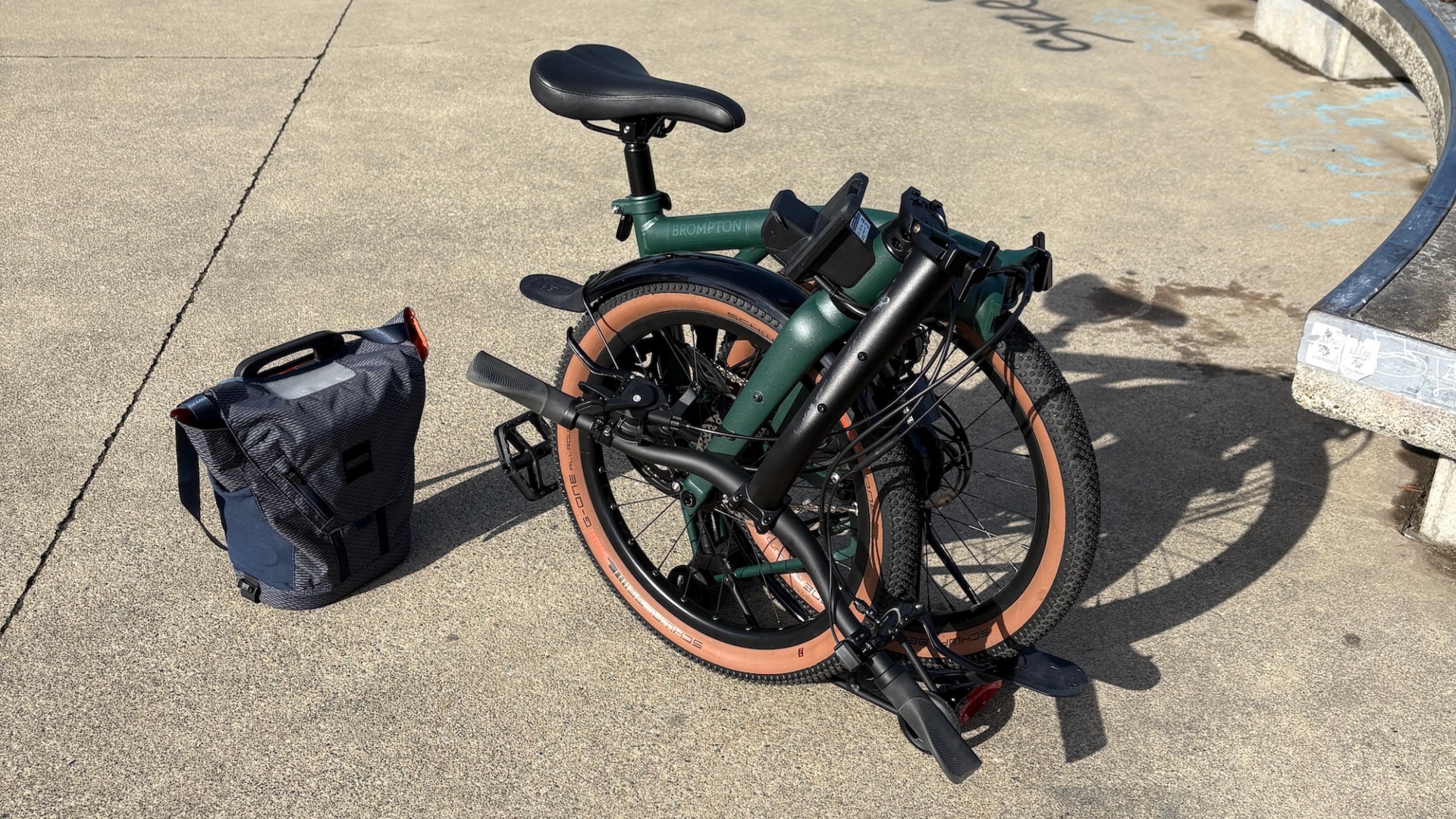
This bike combines classic Brompton DNA with wider tyres and disc brakes to create a highly functional way to navigate urban environments. The hub-based motor provides good power and excellent range, though it is limited to 20 mph. However, the complex design makes troubleshooting tricky, should any issues arise, and the price is steep compared to other city-friendly options.
-
+
Extremely fun to ride
-
+
Foldability is straightforward and intuitive
-
+
Excels at multi-modal transit
-
-
Complex electronic components make troubleshooting tricky
-
-
Expensive
You can trust Cycling Weekly.

Despite having lived in several very small city apartments over the years, I’ve never once owned a folding bike. Perhaps it's cultural, but folding bikes simply aren’t as common in North America as they seem to be in the UK. I can picture business people in suits zooming about London on two tiny wheels, but the same phenomenon hasn’t happened here (yet).
When the opportunity came to test out Brompton’s new Electric G Line model, I was curious, but I was also a little unsure what to expect. Would a folding bike be up to the rigours of Seattle’s potholed, SUV-filled streets? And would such a bike actually be useful? I was also hesitant to test out a commuter-specific bike as someone who works exclusively from home.
Nevertheless, I was excited to build it up and get out for a spin when the Brompton arrived on my doorstep in its compact cardboard container. Whereas most Bromptons use 16-inch wheels and rim brakes, the Electric G Line features larger (20-inch) wheels, wide tyres and disc brakes. Oh, and a battery and motor, as you may have surmised from the name.
Who is the Electric G Line for exactly? I asked Brompton this, and was told that it’s intended for “urban commuters who value portability—avoiding theft, taking the bike on trains or in the car—as well as adventurous riders who fold it to travel by car, train or campervan (RV) and enjoy riding for leisure on both gravel and paved roads.”
Specifications:
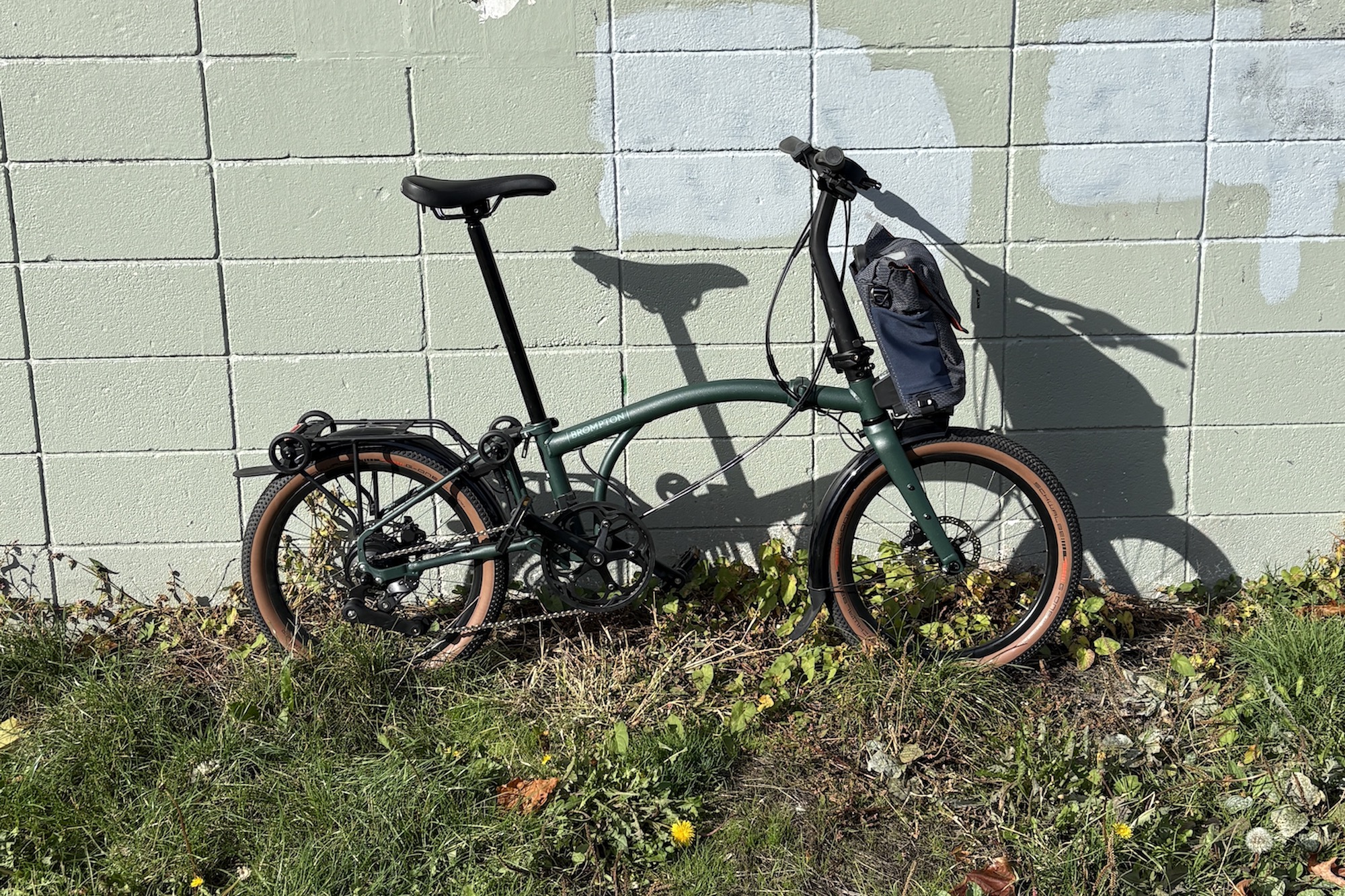
- Frame material: Steel
- Sizes: S, M, L
- Price: $4,950 /
- Motor: 250-watt rear hub motor with torque sensor
- Weight: 42.5 lbs, as tested
- Colours: Traildust White, Adventure Orange, Forest Green
- Range: 30-60 km (approximate)
- Certification: UL 2849 Standard
Design and Construction
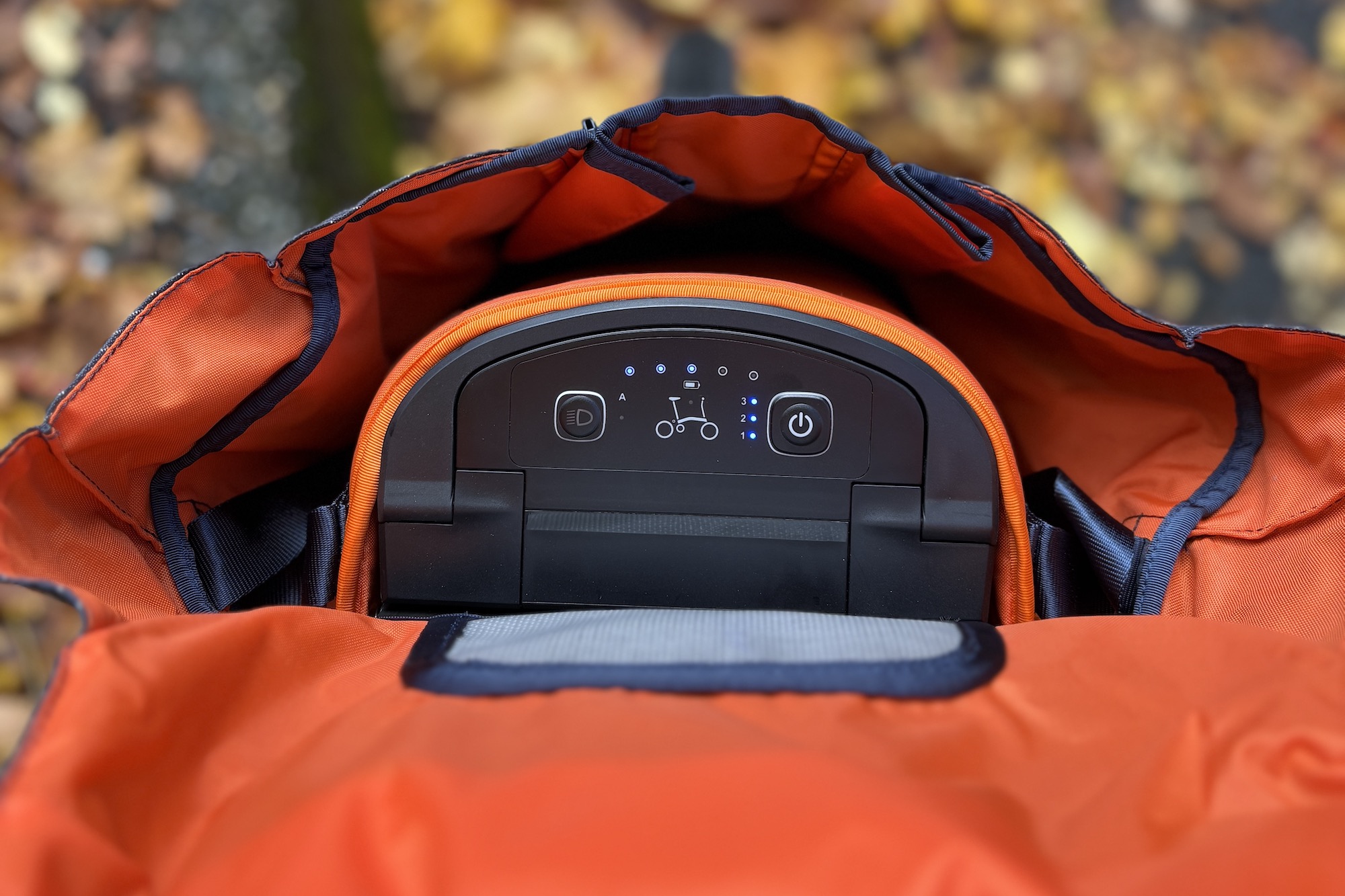
Just like every bike that Brompton produces, the Electric G Line’s most notable feature is its ability to fold down to a compact size. Producing a bike that folds presents several complex challenges, especially in cable routing. Making everything work with hinges requires precise engineering and installation. Further, the drivetrain needs to accommodate both a motor and shifting system on top of this. As such, the Brompton is visually quite busy—everywhere you look, there are cables, wires, plugs, etc.
Part of the wiring system is dedicated to the integrated lighting, which is necessary for regular city riding. The lights and electronic-assist settings are controlled via a handlebar-mounted display and buttons located directly on top of the battery. Brompton also offers a companion app that allows users to monitor performance.
The hub-based 250-watt motor is paired with a four-speed rear derailleur developed by Brompton, with a single chainring up front. The bike uses Tektro hydraulic disc brakes, and the specced tyres are Schwalbe’s excellent G-One Allround, which measure 2.1 inches wide. Brompton designed the bike as a Class 1 E-bike, which means it is limited to 20 mph for pedal assist. It does not have a throttle.
The latest race content, interviews, features, reviews and expert buying guides, direct to your inbox!
The bike is available in three sizes, which Brompton claims can fit riders from 5' ‘to 6'6”. Brompton sent me a size medium, recommended for those from 5'6 “to 6’. Since the geometry is designed around 20” wheels, it’s not easy to compare it to a standard diamond frame, but the company provides size guidance via a video guide on its website and stack and reach measurements for each of the sizes.
The 345Wh battery is tucked into a bag attached to the front of the bike, just below the handlebars. The bag also has a small amount of space for additional items, though the payload is limited.
The Electric G Line comes stock with fenders and a rear rack, which features small integrated wheels to allow it to roll when folded, a necessity for the nearly 45-pound bike. It has a three-year electric systems warranty and a seven-year frame warranty. Bicycles are available for purchase directly from Brompton or through the company’s dealer network.
The Ride
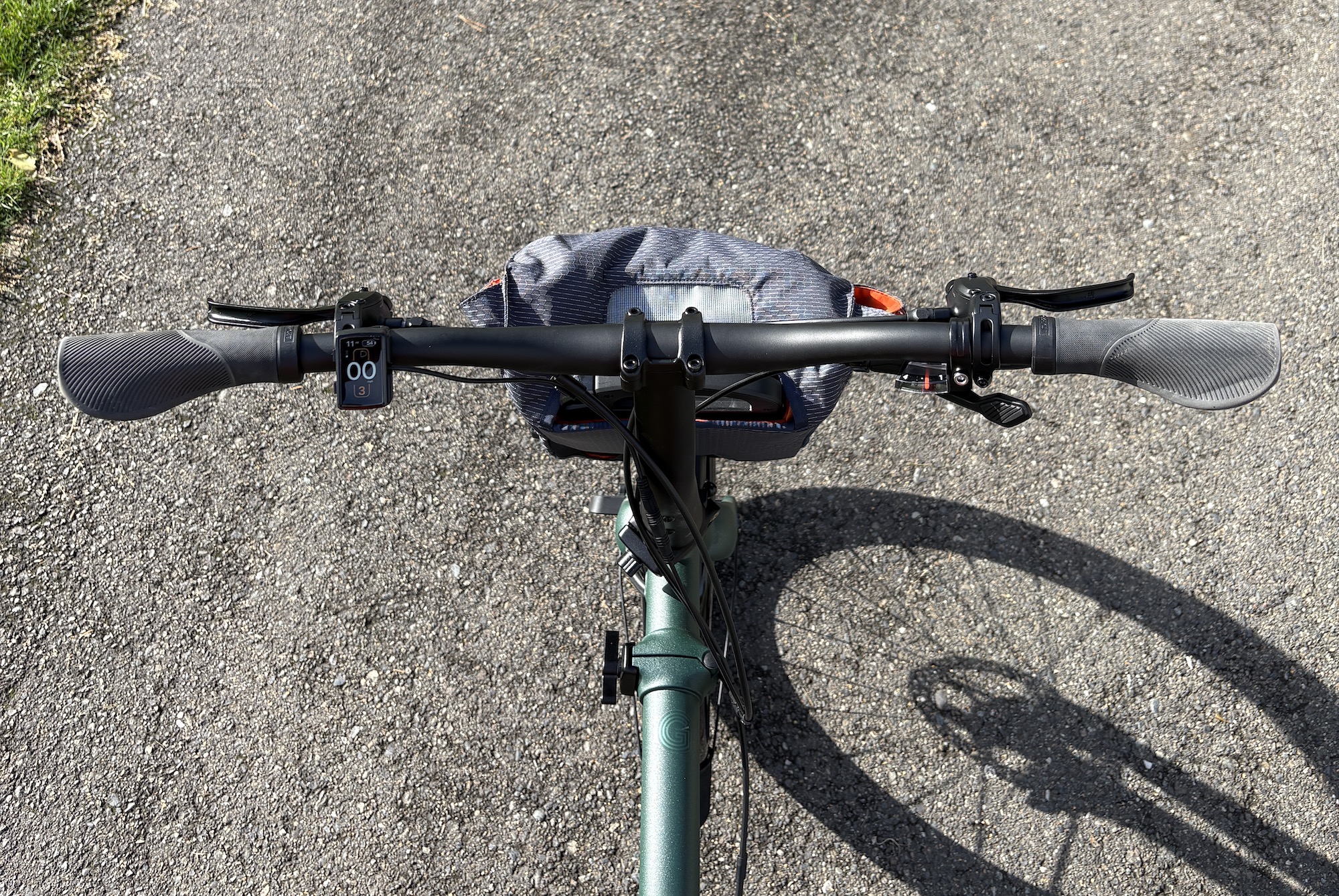
Before I first started taking the Brompton around town for errands, I girded myself for ridicule. Would I be laughed out of the grocery store? Teased on the train? Stuffed in a locker at the gym? Instead, what I encountered was unbridled curiosity. “What is that?” “How does it work?” “Can I see it fold up?”
People were also surprised to learn that not only does the bike fold in half, but it has a motor. The list of features is impressive, but the end result is something fun that doesn’t take itself too seriously. It’s a bike, first and foremost, that just happens to fold up.
I did the majority of my testing on city streets, but I also tried to seek opportunities to take the Electric G Line off-road. The wider tyres have a huge impact on the bike’s overall performance: they add comfort, stability and traction, as well as increased puncture protection compared to narrower tyres.
I’m a fan of wide tyres on all bikes, but they are especially important on bikes with small wheels because they increase pneumatic trail, which helps a great deal to make the front end handle predictably. Even with 2.1-inch tyres, the front end is twitchy compared to a larger-wheeled bike, but once you adjust to this, it’s perfectly comfortable. Overall, the bike is quite playful to ride and seems to encourage fun, despite the rather hefty 42+ lbs of weight.
It took me a few tries to learn how to fold and unfold the bike—there’s definitely a learning curve, but once I understood how everything fit together, I was comfortable breaking it down everywhere I went.
Since I don’t take the train to work, I used the Brompton primarily for errands. It was pleasant to ride around without carrying a lock, and even better to not worry about the possibility of theft since the bike was with me at all times. Of course, doing groceries while wheeling around a bicycle, even folded up, is cumbersome, but for the post office, gym or meetings, the bike was easy to stash in an unobtrusive spot nearby. Not every office is bike-friendly, but a Brompton is compact enough that it can live under a desk comfortably.
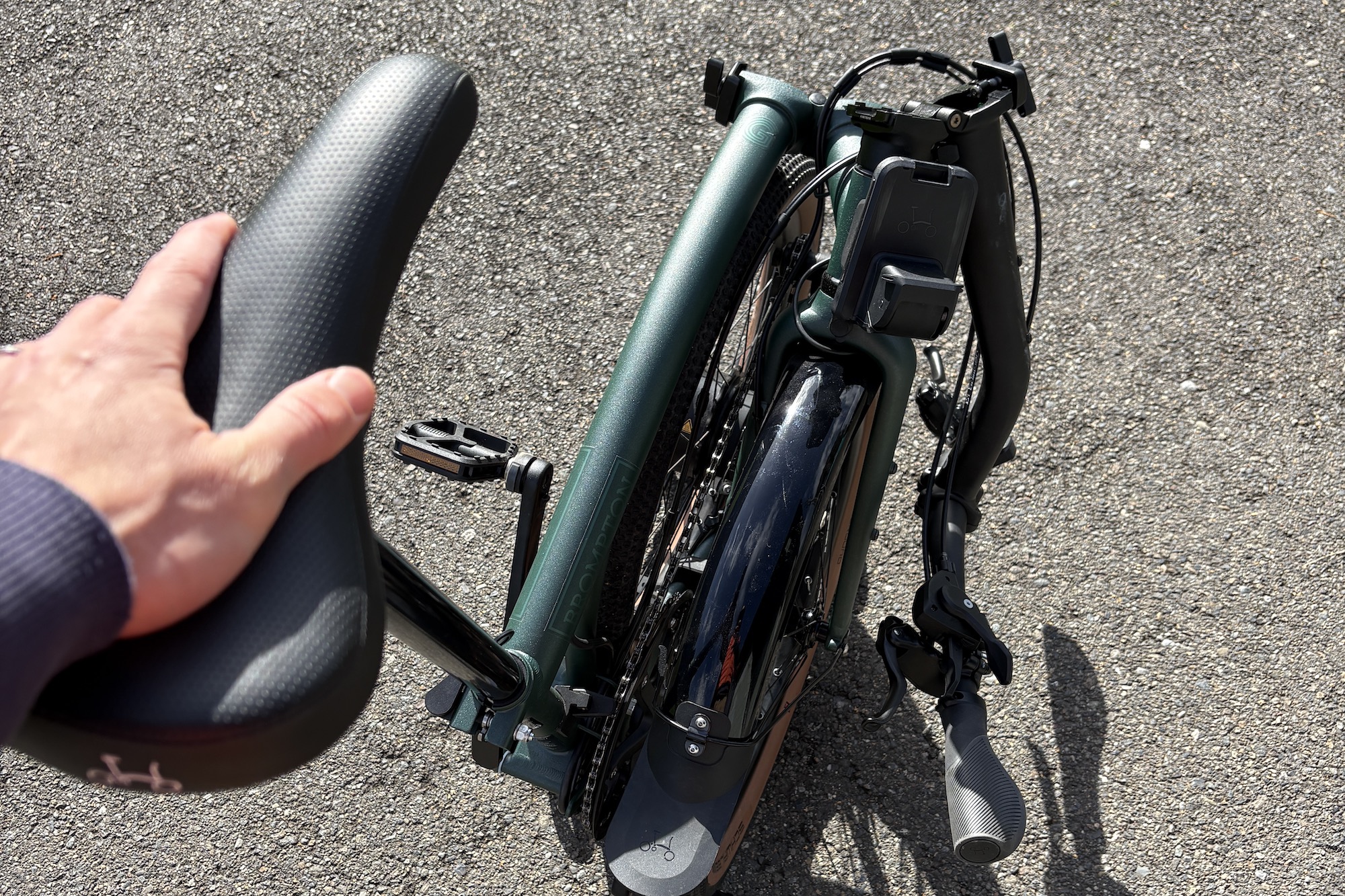
The location of the battery, on the front of the bike, is unusual, but this decision allowed Brompton to add controls to the battery unit, which are easy to adjust from the saddle. The power assist level and light settings are both visible, as well as the charge level. I was pleasantly surprised by how long the battery lasted during my rides, even at full e-assist.
I was less enamoured with the fact that the battery must be removed to charge, and further, that the plug is located on the bottom, which is awkward. It would be preferable to have the charging port in a location that doesn’t require battery removal.
I also think the battery cradle could be more robust—I didn’t have any issues in the time I tested the bike, but I worry that repeated jostling, especially off-road, would overly stress the mechanism and it could fail.
Through repeated foldings and unfoldings, I had a connector wire come undone, which prevented the torque sensor from communicating with the motor and robbed the bike of power. This ended up being an easy fix, but troubleshooting the many wires and cords could be more straightforward. I was able to ascertain that the issue was related to the torque sensor from the sequence of blinking lights, but I had to ask for help from Brompton in order to solve the issue.
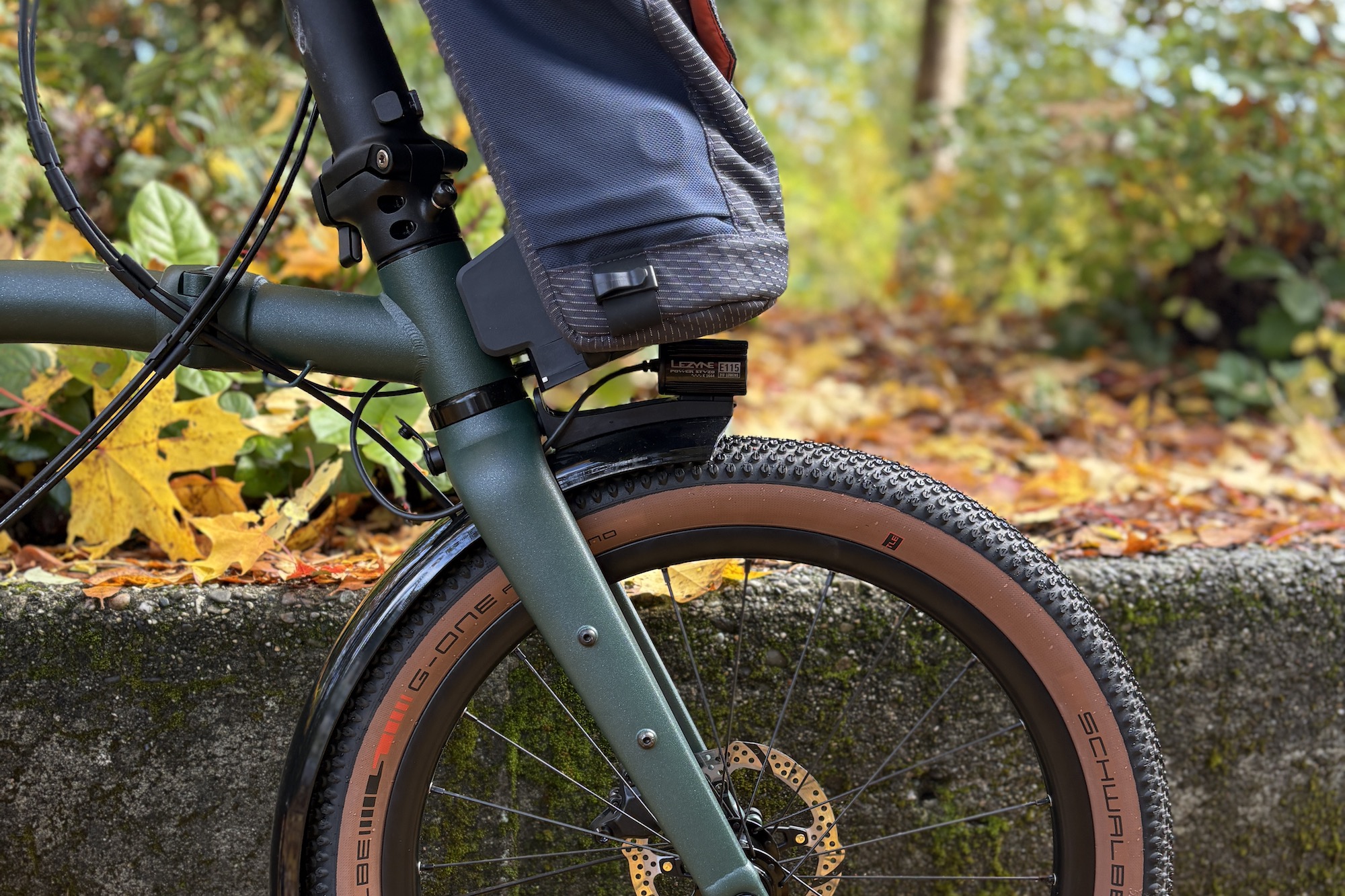
I also experienced the rear derailleur cable popping out of the brazed-on cable stop, which mucked up the shifting and required some adjustment. This is the kind of thing that someone who isn’t an experienced mechanic would have trouble noticing and repairing, and could be improved.
Despite these issues, my primary takeaway from my time on the Electric G Line is that it is an extremely enjoyable bike to ride. I found myself adding stops to my errands and being able to easily and comfortably bring the bike along with me wherever I went. I’m not sure how I would carry more cargo if I were using it as a daily commuter (Brompton does sell a variety of bags and such), but the combination of a compact backpack and the front bag was sufficient for my needs.
Value & Verdict
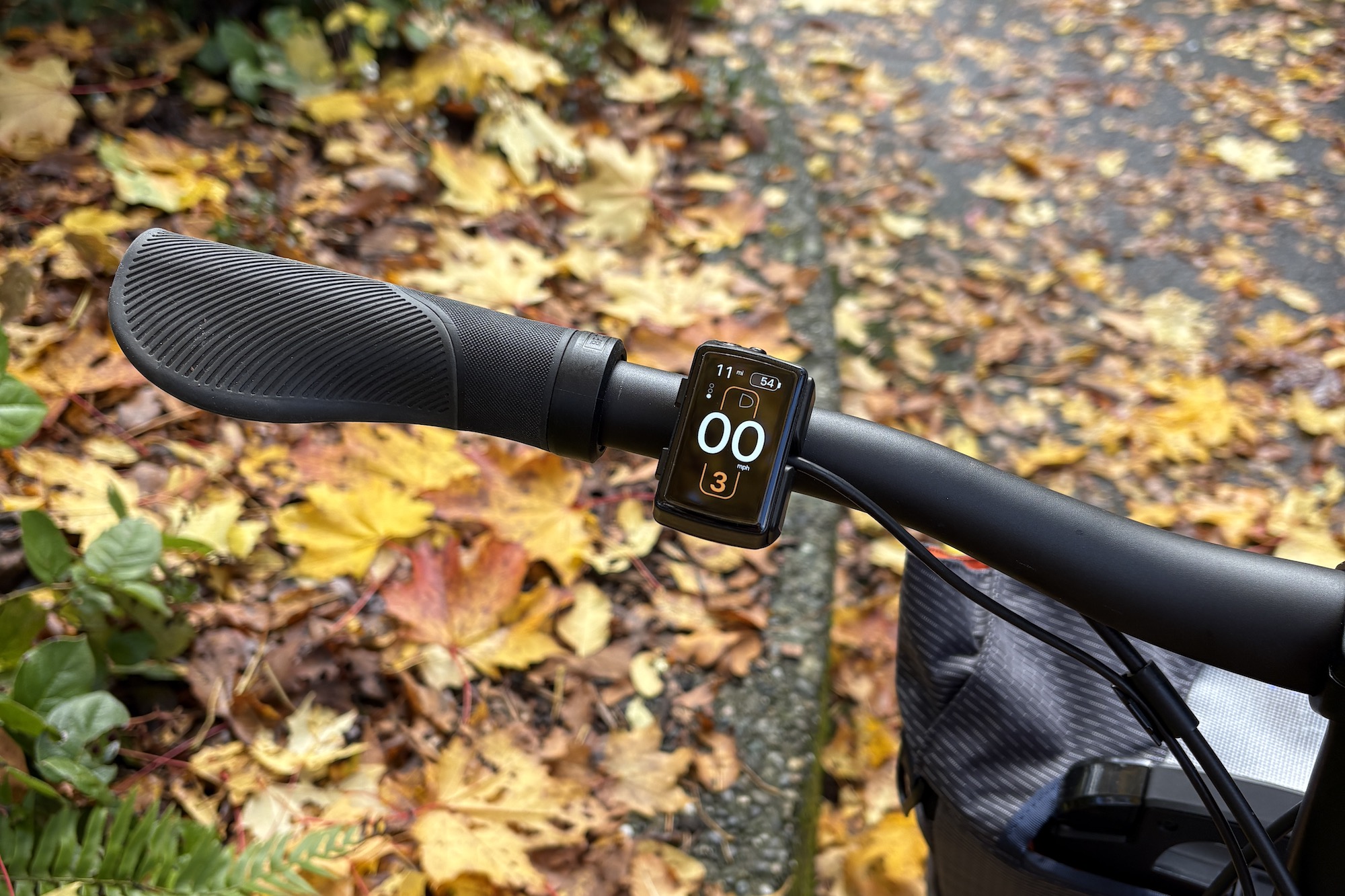
If you ride a train or bus wherever you need to go every day, the Electric G Line would be a fantastic option for getting to and fro comfortably and efficiently. It takes some practice to be able to fold the bike up quickly, but once you get the hang of the sequencing, it becomes familiar.
Other than the small troubleshooting issues I encountered, which I chalk up to the sheer complexity of manufacturing a folding electric bike with integrated lights, my primary criticism of the Brompton is the price. For someone who wants the best folding electric bike available, the Electric G Line is an excellent option. Tern and Dahon also make very good folding bikes, and there are several more affordable options out there as well. The closest competitor to this bike is Tern's Vektron S10, which also has 20-inch wheels and disc brakes, but uses a Bosch mid-drive motor instead. The Tern is heavier and does not fold down as compactly as the Electric G Line; however, it is significantly cheaper at $3,549. Brompton’s new model is very capable, but the price is a tad too steep for it to be an option for many commuters.
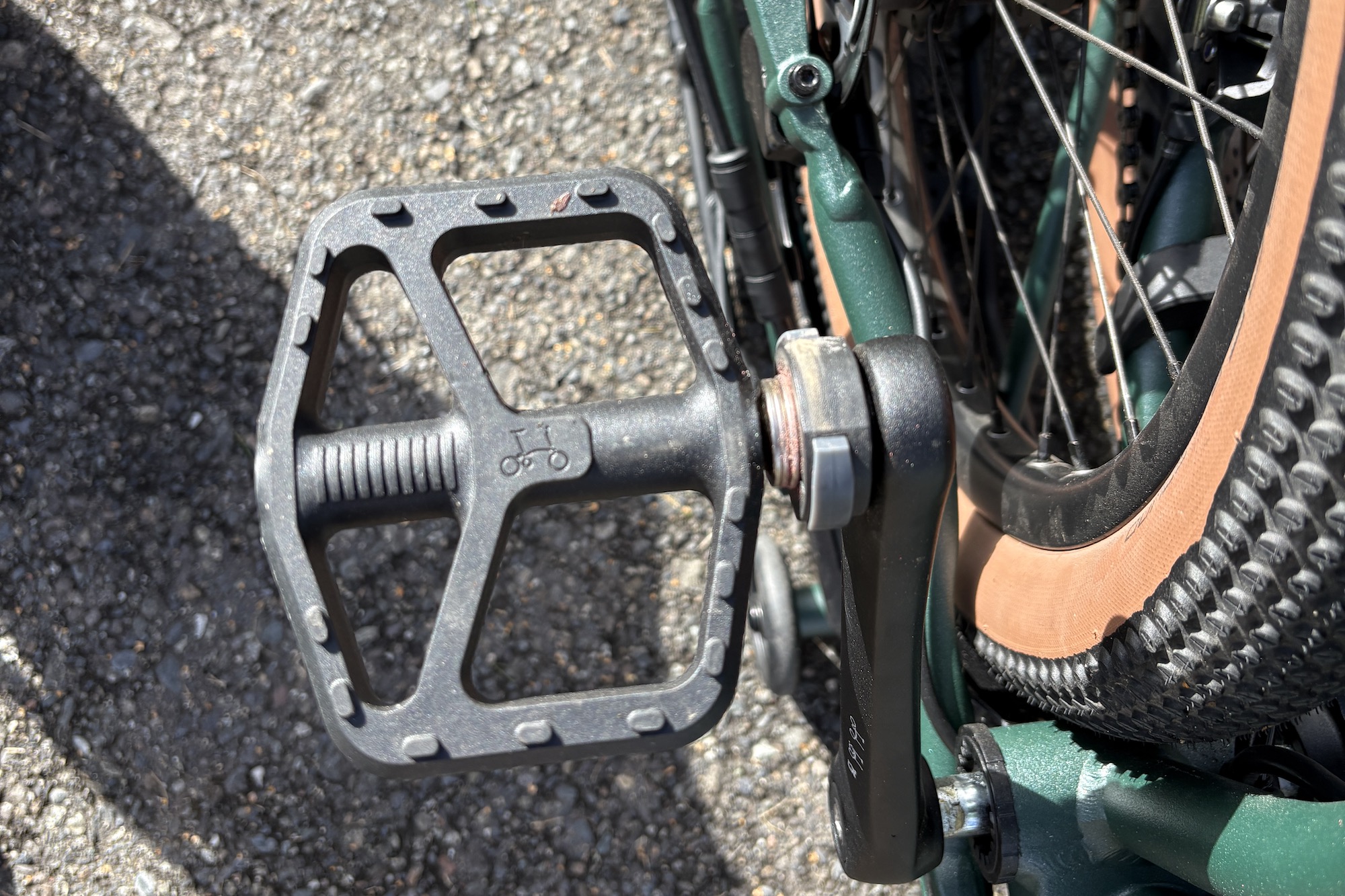
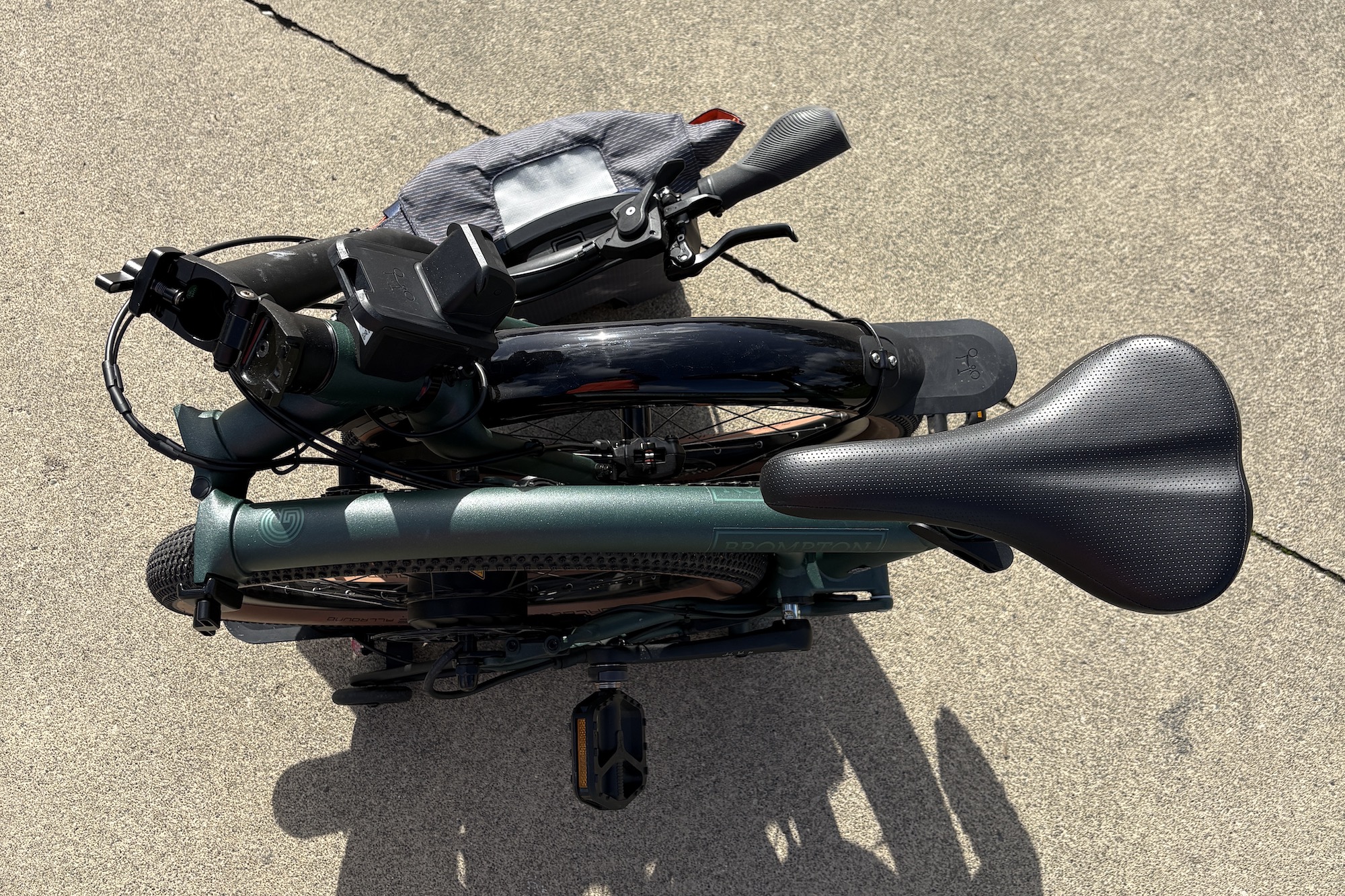
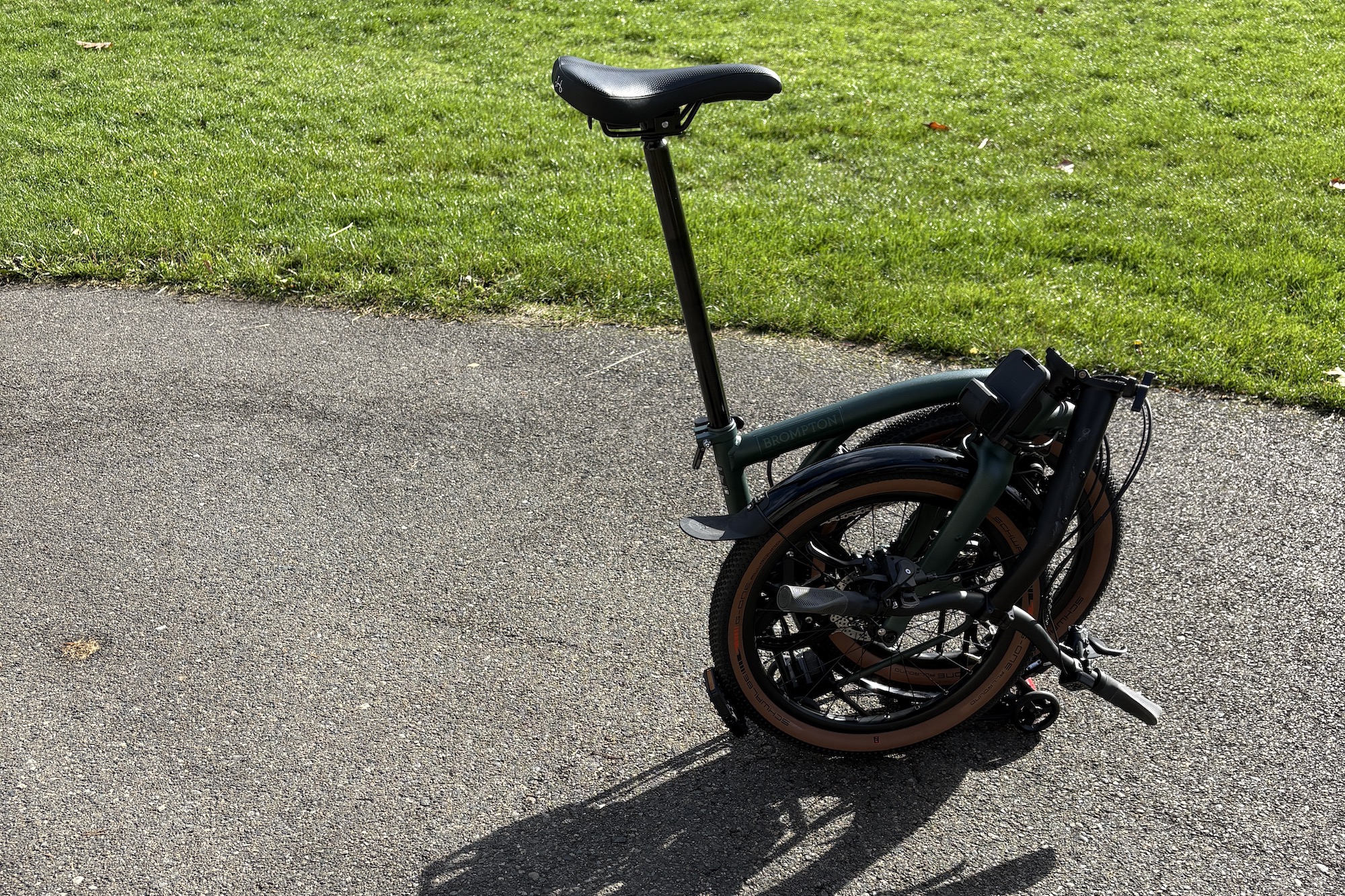

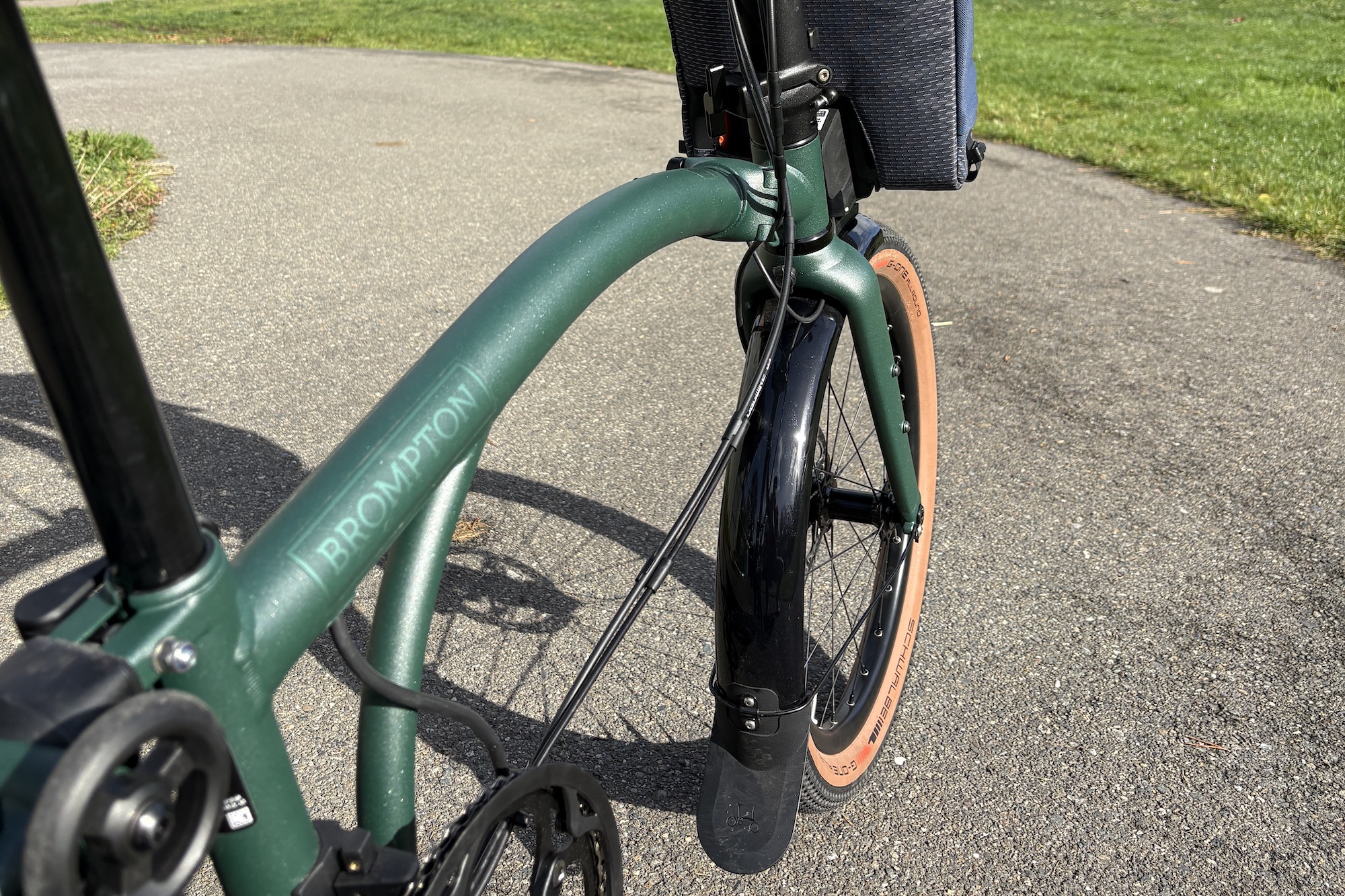

Tyler Boucher is a former (and occasionally still) bike racer across several disciplines. These days, he spends most of his time in the saddle piloting his children around in a cargo bike. His writing has appeared in magazines published in Europe, the UK and North America. He lives in Seattle, Washington.
You must confirm your public display name before commenting
Please logout and then login again, you will then be prompted to enter your display name.